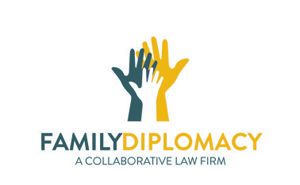Video: How Does Collaborative Divorce Work?
Collaborative divorce seems great in theory, but many people don’t quite understand how it works. This great video from the Crouch Group and Rhett Creative provides a fantastic explanation of how Collaborative Divorce works.
The following is a transcript of the video:
Collaborative divorce is one of the options for a divorce. Most people are familiar with the adversarial process,which is Court. But a collaborative divorce is an option that enables couples to divorce without fighting in court.The best way to describe how the collaborative divorce process works is the story of the orange. The story of the orange goes like this:There’s one orange and two children. Each child wants the orange. How can we effectively double the orange so that each child gets what they want?By asking the right questions, we can determine that one child wants the rind of the orange to make icing for cupcakes while the other child wants the juice. In this way, we can essentially double the orange so that each child gets what they want. We can do that same thing for families in the collaborative divorce process by asking the right question.In a collaborative divorce, each client has an attorney so that they have their own advocate to support and advise them in their case. The case is resolved without the fighting animosity and long term emotional and financial damage that court can cause.At the first joint meeting, the clients state what is important to them and their family, such as for the children to have security and stability or the clients to each have financial security and stability, and for both parents to have a good relationship with the children after the divorce is over.In most cases, the collaborative team includes a financial professional, who assists the couple in gathering the financial information about their assets and their debts and helps them develop their post divorce budgets.The other member of the collaborative force team is a trained mental health professional, but these people do not do therapy. Rather, they help clients develop their parenting plan, if they have children, and they coach the clients on communication techniques that will help them keep the process moving. Communication breakdowns slow the process down, which ends up costing the clients money.Through a series of joint meetings, which are usually two hours long, the team and the couple will review the financial information and the parenting plan, develop options for the division of their assets and liabilities, and negotiate an agreement that is acceptable to them both.Finally, the attorneys drafts the agreement, and the clients meet one last time to sign the decree. Then it is presented to the judge in a short hearing. This is the only time that anyone in the case goes to court.The couple and, if they have children, their entire family is less harmed by the divorce when they take advantage of the collaborative divorce process.
Adam B. Cordover is an author of an American Bar Association book on Collaborative Practice. He is a founder of the Tampa Bay Collaborative Trainers and a member of the board of the International Academy of Collaborative Professionals and Florida Academy of Collaborative Professionals.



